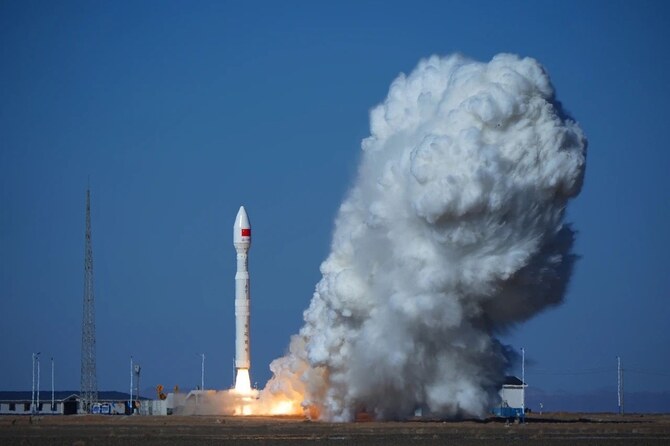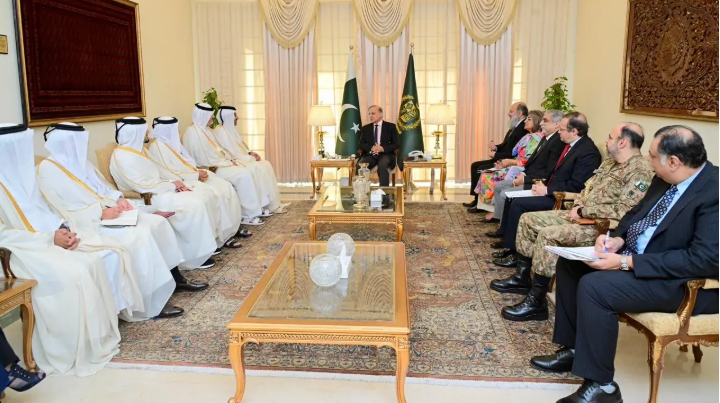PTBP Web Desk
The Sultanate of Oman, through the “Oman Lens” company, has inaugurated its first-ever satellite, OL-1, marking the country’s official entry into the realm of space technology.
The satellite, which is registered with the International Telecommunication Union (ITU), represents a major leap forward in Oman’s space capabilities, combining advanced remote sensing and earth observation technologies with cutting-edge artificial intelligence (AI) features.
The successful launch of OL-1 signals a pivotal moment in Oman’s space exploration journey. With the deployment of this optical satellite, the Sultanate has joined an exclusive group of nations that have successfully developed and launched satellites equipped with advanced AI processing capabilities. The satellite’s primary function is to capture high-resolution imagery of Oman’s environment, infrastructure, and natural resources, with the added benefit of AI-driven real-time analysis.
The OL-1 is not just a standalone achievement; it is the first member of a planned satellite constellation aimed at strengthening Oman’s capabilities in earth observation. The broader vision includes deploying additional satellites over the next five years, in line with the country’s ambitious plans for its space sector. By integrating AI and satellite technology, Oman aims to enhance its ability to monitor and manage its resources, making data-driven decisions that will benefit the nation’s development.
One of the standout features of the OL-1 satellite is its AI-enhanced capacity for real-time data processing. Traditionally, satellite data collection and analysis can take considerable time. However, the OL-1’s integration of artificial intelligence enables it to quickly process and analyze high-resolution imagery, delivering actionable insights to relevant stakeholders in both the public and private sectors. This swift data processing capability positions Oman to leverage its satellite’s capabilities for immediate use in various sectors, including environmental monitoring, urban planning, agriculture, and disaster management.
The satellite’s optical sensors are designed to capture highly detailed images of the land, providing valuable data on natural resources such as water bodies, vegetation, and land usage patterns. Additionally, it can monitor infrastructure, offering critical information for urban development and maintenance. The AI component enhances the satellite’s ability to not only capture images but also analyze them in real-time, identifying patterns and anomalies that may require attention, thereby streamlining decision-making processes.
The launch of the OL-1 satellite is closely aligned with Oman Vision 2040, the country’s long-term development strategy, which emphasizes the importance of innovation and technological advancement. This initiative envisions the development of smart cities and the improvement of data analytics, with a special focus on utilizing cutting-edge technologies to drive sustainable growth. The deployment of satellites like OL-1 plays a crucial role in this vision by providing the infrastructure needed to support smart city development and improve the country’s technological and scientific capabilities.
As part of Oman Vision 2040, “Oman Lens” is set to launch several more satellites over the next few years. These satellites will serve a variety of purposes, from earth observation to telecommunications, positioning Oman as a major player in the global space industry. This ambitious goal reflects the country’s determination to diversify its economy, moving beyond its traditional reliance on oil and gas industries and embracing new sectors like technology and space.
The launch of the OL-1 satellite is expected to have a significant impact on Oman’s economic and environmental landscape. With advanced monitoring capabilities, the satellite can contribute to more efficient management of Oman’s natural resources, such as water, energy, and land. It can also aid in disaster management by providing real-time data on natural events like floods, wildfires, and droughts, allowing for faster response times and more effective recovery efforts.
Moreover, the satellite’s ability to provide high-resolution imagery and rapid data analysis could support industries like agriculture, tourism, and infrastructure development. For example, the government could use satellite data to track crop yields, monitor water usage, and plan infrastructure projects more effectively. By providing valuable insights into the country’s resources, the OL-1 satellite could drive economic growth and sustainability, opening up new opportunities for innovation and development.
The successful deployment of OL-1 marks the beginning of a new chapter in Oman’s space endeavors. The Sultanate is positioning itself as a forward-thinking nation with a strong commitment to technology and innovation. The satellite’s AI-powered features are just the beginning, and Oman Lens is poised to make significant strides in satellite technology and space exploration in the coming years.
Oman’s growing space sector will likely attract international attention and partnerships, fostering collaborations with other countries and organizations involved in space exploration and technology. By embracing space technology, Oman is laying the groundwork for a future in which space plays a central role in its economic, scientific, and technological development.
The launch of the OL-1 satellite is a clear demonstration of Oman’s determination to be at the forefront of technological innovation. With its AI-enhanced capabilities and the promise of further advancements, the Sultanate is well on its way to becoming a leader in the global space industry. As the country continues to push boundaries in space technology, it will undoubtedly unlock new opportunities for growth, both at home and internationally.
The future of Oman’s space program looks incredibly promising. With the successful deployment of the OL-1 satellite, Oman has set a high bar for itself in the fields of satellite technology, AI, and earth observation. As part of its Vision 2040, the country is committed to expanding its space capabilities and continuing to push the boundaries of what is possible in space exploration.
In the coming years, Oman will likely see the benefits of its investments in space technology, from smarter urban planning and improved resource management to more efficient disaster response systems and economic growth driven by data. The OL-1 satellite is only the beginning, and Oman is well on its way to becoming a key player in the global space community.




